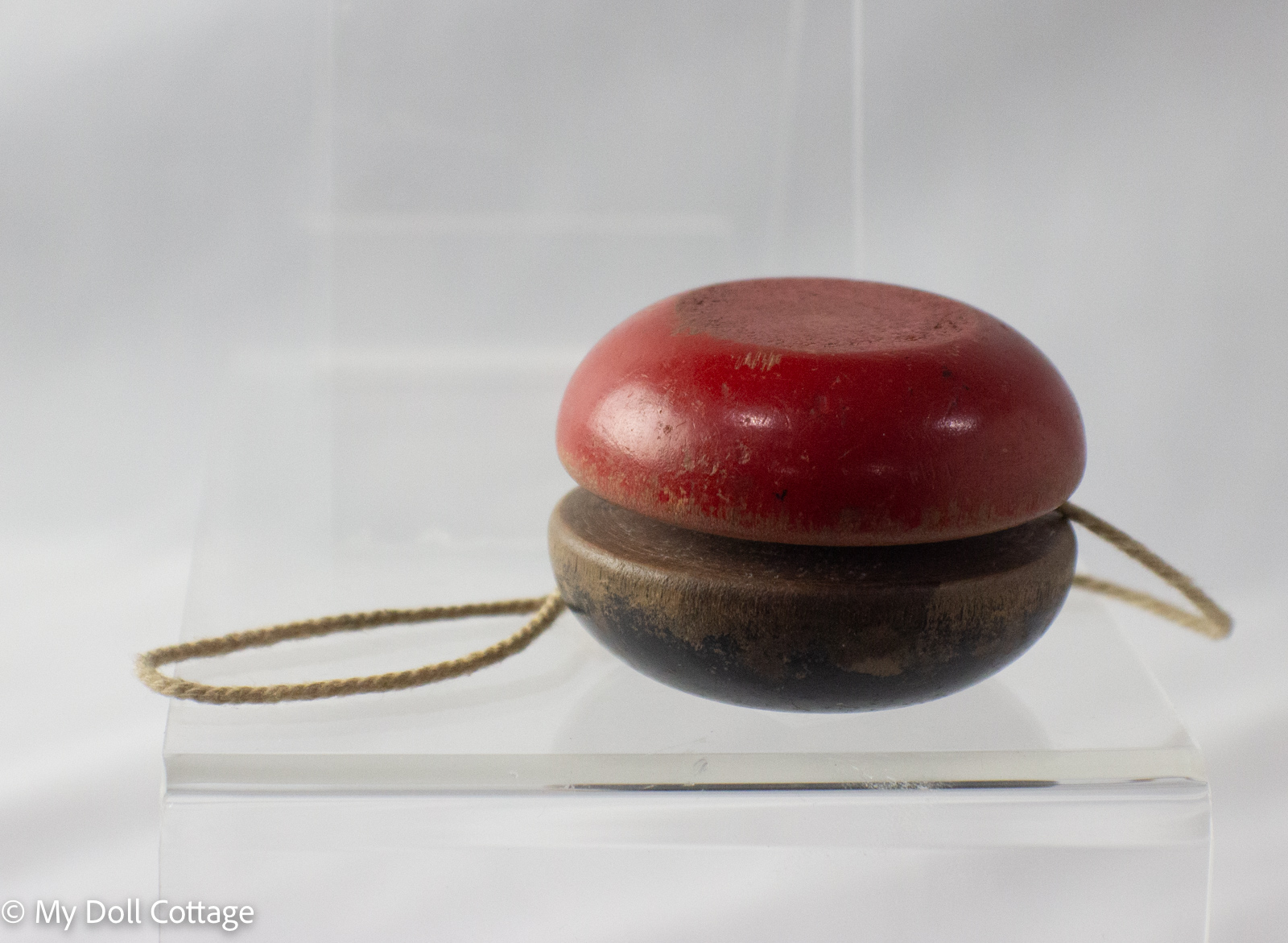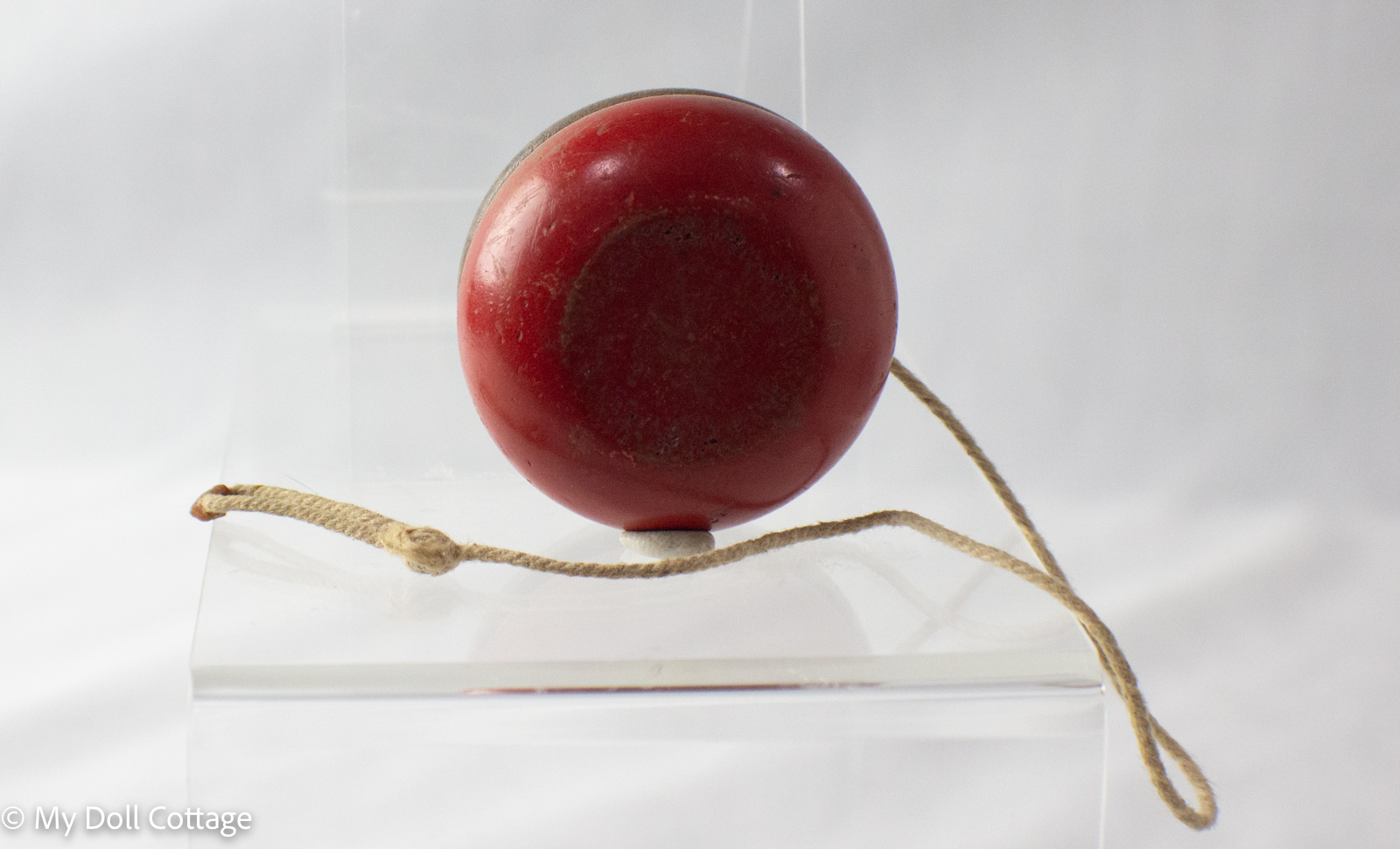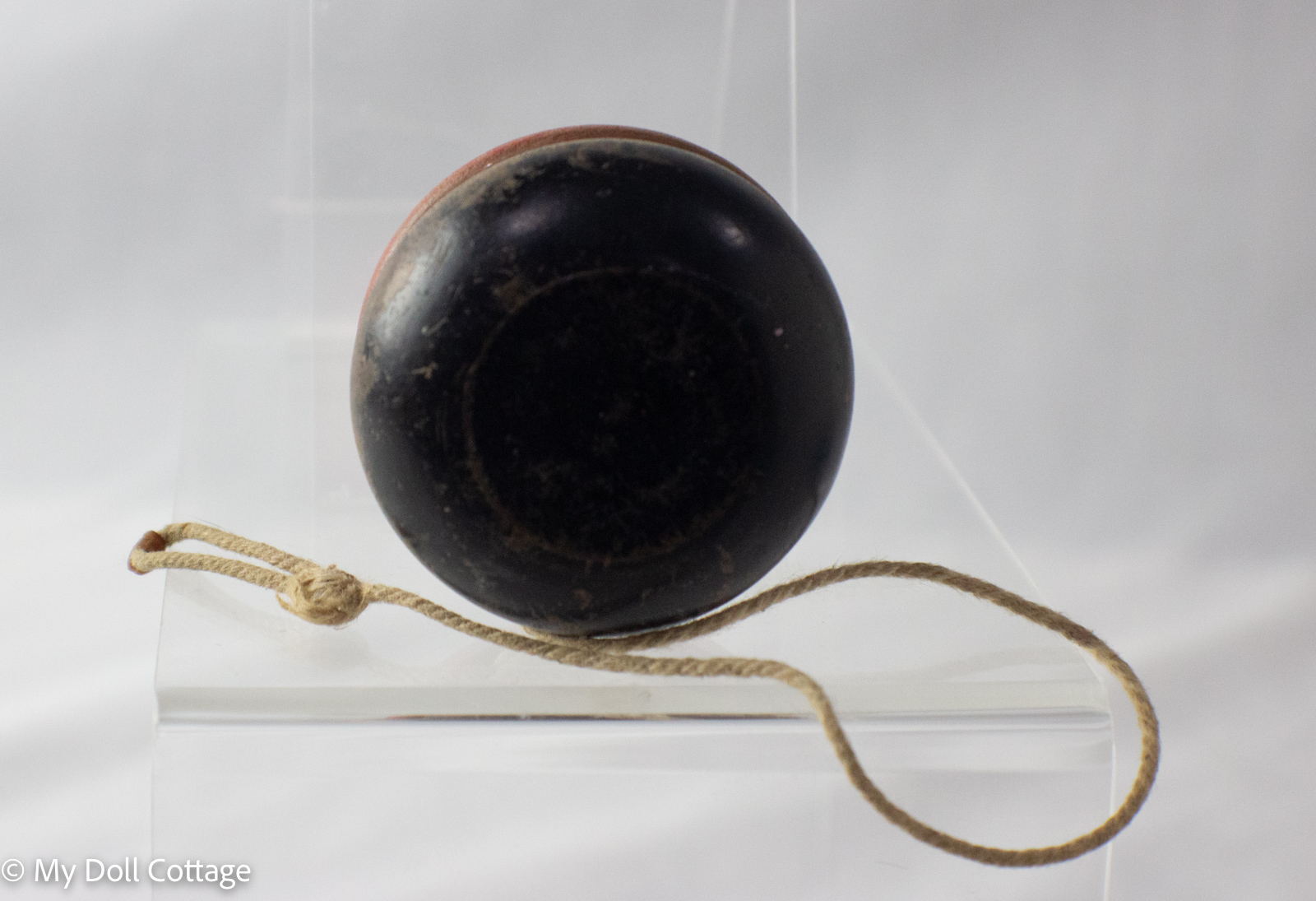c.1950s Duncan Red and Black Wooden Yo-Yo with Original String

Vintage red and black wooden Duncan yo-yo with original cotton string and finger loop, c.1950s
This classic Duncan wooden yo-yo features a red and black colour scheme and retains its original string with the traditional finger loop knot. Measuring 55 mm in diameter and 22 mm in depth, the toy displays signs of play and age with paint wear typical of its era.
The Duncan Yo-Yo Company was founded by Donald F. Duncan Sr. in Chicago in 1929, after acquiring the rights to the design from Filipino inventor Pedro Flores, who had popularised the modern yo-yo in the United States. By the 1950s and 60s, Duncan had become the world’s leading yo-yo manufacturer, known for nationwide contests, television sponsorships, and its slogan “If it isn’t a Duncan, it isn’t a Yo-Yo.”
Duncan’s wooden yo-yos from this period were produced in a range of colours and promotional editions, often made from maple wood and finished with glossy enamel paint. This example, with its two-tone finish, represents the iconic post-war style before the company transitioned to plastic yo-yos in the late 1960s.
Measurements: 55 mm (diameter) x 22 mm (depth) x 40 mm (string length looped)
Material: Wood with original cotton string
Condition: Good vintage condition with moderate surface wear to paint consistent with age and use
Estimated era: Circa 1950s–1960s
Manufacturer: Duncan Yo-Yo Company, USA
Made from the following materials
Wood in Dolls and Toys
Wood has a long and rich history in the creation of dolls and toys, valued for its durability, natural beauty, and versatility. As one of the oldest materials used in toy making, wood has played a significant role in various cultures around the world, offering endless possibilities for creativity and craftsmanship.
What is Wood?
Wood is a natural material sourced from trees, known for its strength, warmth, and unique grain patterns. Its availability and ease of manipulation have made it a favored choice for artisans and toy makers for centuries. From softwoods like pine and cedar to hardwoods like oak and maple, different types of wood offer varying characteristics that influence the design and functionality of toys.
Applications in Doll and Toy Making
Wood has been used to create a wide range of dolls and toys throughout history. Early wooden dolls often featured simple shapes and painted faces, serving as cherished companions for children. These dolls were crafted with care, sometimes adorned with fabric clothing or accessories made from other materials. The tactile nature of wood allows for a comforting feel, making wooden dolls especially appealing to young children.
In addition to dolls, wooden toys have a rich tradition that includes building blocks, puzzles, and cars. Wooden blocks, in particular, are celebrated for their educational value, encouraging creativity and imaginative play as children construct their own worlds. The durability of wood ensures that these toys can withstand the rigors of play, often becoming family heirlooms passed down through generations.
Cultural Significance
Wooden toys and dolls hold cultural significance in many societies. For example, traditional wooden dolls from countries like Germany and Scandinavia often reflect local customs, attire, and folklore. These handcrafted pieces not only serve as toys but also as representations of cultural heritage and craftsmanship.
Artistic Expression and Collectibility
With the rise of artisan craftsmanship, wooden dolls and toys have gained popularity among collectors and enthusiasts. Artisans often showcase their skills by creating beautifully detailed and intricately designed wooden toys that appeal to both children and adults. The natural beauty of wood, combined with unique craftsmanship, adds to the collectibility and charm of these items.
Related Dolls and Toys from our collection




